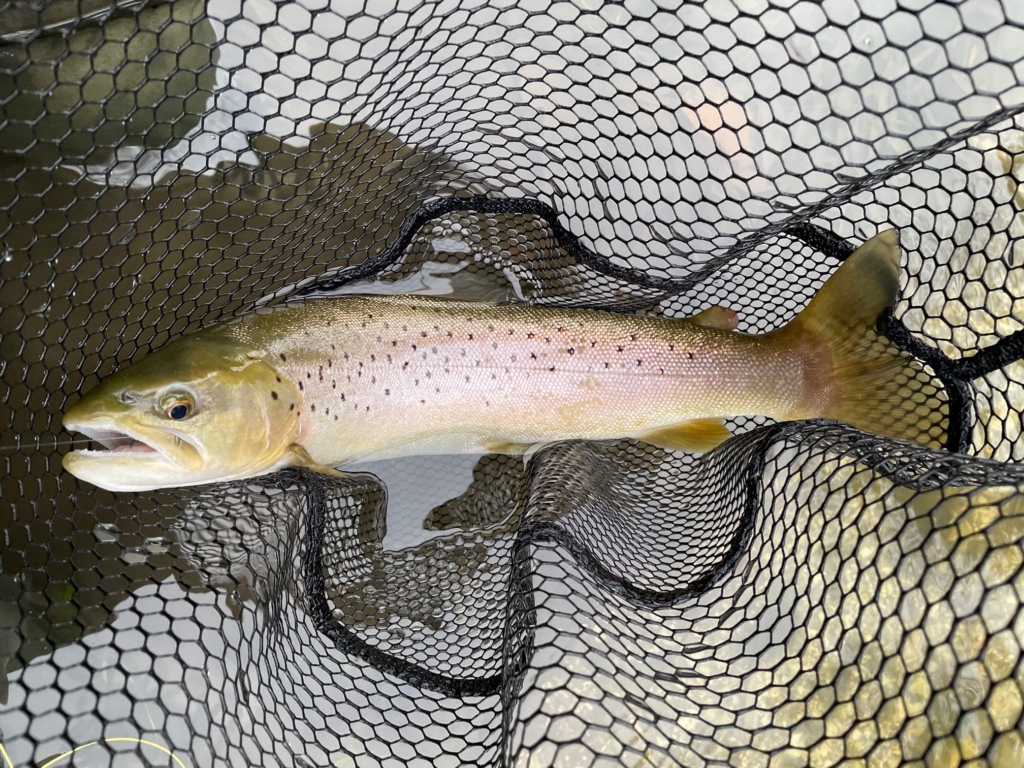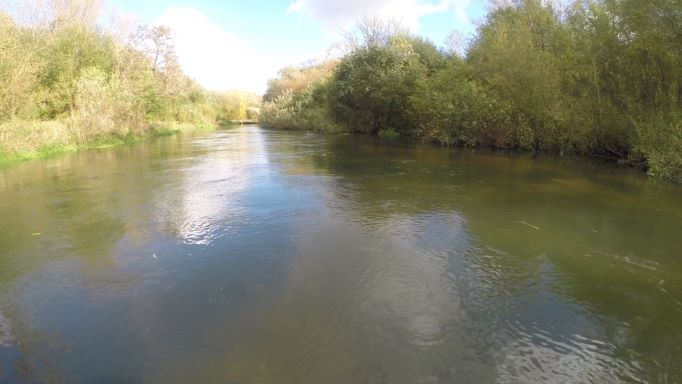I’m into my third year as a member of Salisbury & District Angling Club but for various reasons I have not yet ventured out for grayling over the autumn and winter. I’ve caught plenty by accident whilst fishing dry flies for brown trout and they are a lovely fish to catch. So, this year, I decided to try my hand at targeting grayling.
I’m comfortable with dry fly tactics so I aimed to have some dedicated sessions trying nymph tactics. I’d been tying a small range of grayling flies during the year so when the brown trout season finished and the weather started to get a little colder, I was ready to go.
I’d done some research on set-ups and decided on a few options to try which would not require much (if any) additional kit and minimal changes to my normal dry fly set-up. My first approach was to try euro-nymphing which basically involves fishing weighted nymphs on a short line and keeping in very close contact with the flies, using an indicator of some sort to help with bite detection. I bought a Hends Czech Nymph Furled Leader which I attached to the end of my tapered leader (shortened to five feet) which I greased up. I added normal tippet to the end with a lighter nymph on a dropper at three feet and a beaded nymph on point a further three feet away. Grayling will tend to sit on the river bed so the aim is to get the flies close using different weights and tippet lengths, depending on the speed of current and depth of water. Like most things in fishing, this seems to be a matter of trial and error and experience.
Session 1
I started with a shrimp on the top dropper and a beaded hares ear with a pink collar on the point. I stripped a small amount of line off the reel and started to experiment with casting and keeping the line tight as the flies move down the current. The best approach for me was to have about half a rod length of line out and hold the line by the handle. I then just whipped the line out forward and to one side and then tracked it back down the river by moving the rod but not retrieving any line. This is quite straightforward and in no time you get into a routine of casting and stepping, working your way slowly up river or through a pool.
I worked my way towards a section where I had seen grayling in during the summer months but had no interest and couldn’t see signs of fish. The final section of the beat ends in front of a bridge which I know contains fish. I worked through it and finally got a really good take on a beaded hares ear on the point. It was very clear from watching the braided indicator when the fish took and I just had to lift into the fish. It turned out to be a lovely brown trout, unfortunately out of season but at least proof to me that the method would work.
I tried another few smaller wading sections on my way up the river and managed to get four grayling and another brown trout, most falling to the hares ear but a few on a lighter pheasant tail on the top dropper and an olive nymph with an orange tag.
Session 2
A week later I managed to get up to the same stretch of the Avon for another go. The conditions were very similar so I repeated the same method on a different beat further upstream. I had a go off the bank to start with but found it tricky using a euro-nymphing technique – I may try a dedicated bank day in the future with some different methods. I moved further upstream to another wading beat and slipped into the water. This time I tried a beaded black nymph with a red tag on the point and a disco shrimp on the top dropper. The action was relatively consistent and I managed 3 grayling and a small wild brownie.
I had another hour left so went back down to the section that I’d done well on the previous time and managed another grayling and a couple of decent brownies. Every fish but one had come to the black nymph with a red tag!
Last cast!
On the way back to the car I couldn’t resist having one last cast in a deep pool by a bridge. This is normally surrounded by local walkers, dogs and kids paddling in the river so I tend to give it a wide berth. But today it was quiet and the pool looked fishy, just the sort of water I thought grayling might inhabit. I switched the point fly to a larger, heavier beaded hares ear and cast it into the depth. Almost immediately there was a huge tug on the line (didn’t need an indicator for that) and the rod bent. I knew immediately that this was something big and so unlikely to be a grayling. I played the fish carefully as I was only on 4lb tippet and after 10 heart-stopping minutes, finally slipped a large, wild brownie into the net. The picture below doesn’t really do it justice although the large tail shows its a good fish. I would estimate it was 4-5lb and my largest wild brownie, unfortunately out of season.

Over two sessions I managed 16 fish, which is far more than I have caught on dry flies and shows how effective this method is. So far, the fish seem to have been stationed just outside the main current and have mostly taken the point fly fished close to the river bed. Something with a tag (red or orange) seems to catch their attention but drab pheasant tails and hares ears were successful as well.
